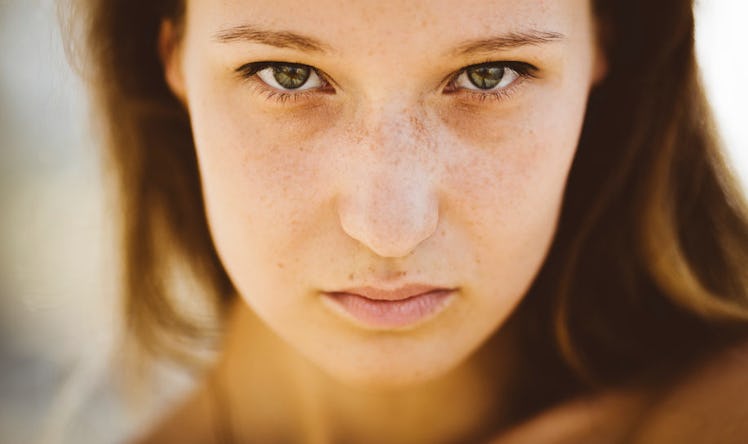
5 Things You Didn't Know About Those Dark Circles Under Your Eyes
Is there anything worse than waking up early, looking in the mirror and being greeted by dark circles under your eyes?
Your coworkers are constantly asking how late you were out last night, your mom keeps commenting on how tired you look and you're getting sick of it.
Because the truth is, you're not that tired. More often than not you get a minimum of seven hours of sleep every night, and while you're not exactly a morning person, you feel pretty energetic throughout the day.
Sound familiar? Trust us, you're not alone in dealing with dark-circle drama.
But if you've been feeling like raccoon eyes are just your cross to bear in life, we've got good news for you: There's actually a lot you can do to about them.
Here's what you should know about dark circles -- and how to get rid of them.
There's a difference between blue circles and brown circles.
The reason dark circles appear is that the skin underneath the eye is extremely thin and delicate, which makes whatever's going on beneath the eye much more visible.
But all dark circles are not created equal.
The most common under-eye circle colors are blue and brown. Blue circles are generally the ones you wake up with and are caused by oxygenated blood gathering underneath the eye.
If you've been sleeping for a while, this color deepens, which explains why they're more common in the morning.
Brown circles, on the other hand, have more to do with skin pigmentation. Brown circles are more likely related to your genes, rubbing your eyes too much or sun exposure.
Diet, allergies and age can have something to do with them.
Because lack of sleep causes the blood vessels under the skin to dilate, not getting enough sleep certainly can increase the look of under-eye circles. But that's not all there is to it.
Sometimes, it has to do with inflammation caused by your diet, so try eating an anti-inflammatory diet rich in colorful fruits and vegetables like broccoli, strawberries and sweet potatoes.
Additionally, under-eye circles generally worsen with age as your skin starts to lose its elasticity.
Joshua Zeichner, the director of cosmetic and clinical research at Mount Sinai Medical Center, tells Real Simple,
As we get older, we lose subcutaneous fat, which can mask blueness below the surface of the skin.
Back to the eye-rubbing we mentioned above -- if you've got itchy eyes, you're probably rubbing your eyes a lot and making your dark circles worse.
So if you have a sneaking suspicion your dark circles are being caused by your allergies, try taking anti-allergy medication like Claritin or Benadryl (only at night, though -- it makes you sleepy!)
Watch your makeup remover.
It may seem like a small thing, but if you're scrubbing the makeup off your eyes on a nightly basis, stop! You're causing capillary damage and inflammation and making your dark circles worse.
Allure suggests using an oil-based makeup remover that will melt the mascara, eyeliner and concealer right off your eyes with minimal rubbing.
You can treat them topically.
Although some creams are more effective than others, there are tons out there that promise to help with and treat under-eye circles.
There are creams with Vitamin C to brighten the skin up, collagen-building creams and even creams with caffeine in them that will help constrict blood vessels.
Retinoic acid creams can be effective in thickening the outer layer of your under-eye skin as well.
And don't forget about sunscreen: Thinner skin is more sunburn-prone, so if you're burning the skin under your eyes, you're definitely not doing yourself any favors.
If all else fails, the right concealer can be super effective.
Don't underestimate the all-powerful concealer. Makeup artist Laura Mercier suggests using a creamy solid one.
She tells Allure,
They provide more coverage [than liquids] and don't wear off as quickly.
We know under-eye circles are the worst thing ever -- but now that you know how treatable they are, aren't you excited to get rid of your raccoon eyes for good?!